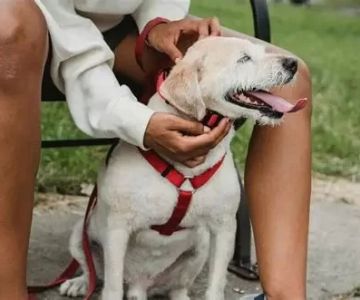- Why-Leash-Training-Is-Important
- Steps-to-Train-Your-Dog-to-Walk-Nicely-on-Leash
- Teaching-Your-Dog-to-Obey-Commands-During-Walks
- Common-Challenges-in-Leash-Training-and-How-to-Overcome-Them
- Professional-Advice-and-Recommendations
1. Why Leash Training Is Important
Training your dog to walk nicely on leash and obey commands is essential for a safe, enjoyable walking experience for both you and your dog. Without proper leash manners, walks can become stressful or even dangerous, with dogs pulling, lunging, or reacting unpredictably. Leash training improves communication, builds trust, and strengthens the bond between dog and owner. It also ensures that your dog respects your leadership and stays safe in public environments, reducing the risk of accidents.
For example, a friend of mine had a young Labrador who used to pull wildly during walks, making it nearly impossible to control him. After consistent leash training, the dog became calm and responsive, transforming their daily walks into peaceful, bonding moments rather than a struggle.
2. Steps to Train Your Dog to Walk Nicely on Leash
2.1 Choose the Right Equipment
Using the right leash and collar or harness can greatly influence the success of leash training. A well-fitted harness that discourages pulling can provide better control without causing discomfort. Avoid retractable leashes during training as they encourage pulling and reduce control.
2.2 Start Training Indoors or in a Quiet Area
Begin leash training in a low-distraction environment where your dog can focus better on learning. Use treats and positive reinforcement to encourage your dog to walk beside you calmly.
2.3 Teach the “Heel” or “Close” Position
Train your dog to walk at your side using commands like “heel” or “close.” Reward your dog generously when they walk calmly beside you. If the dog starts pulling, stop walking and wait for them to return to your side before continuing.
2.4 Use Consistent Commands and Signals
Consistency is key. Always use the same verbal commands and hand signals to avoid confusing your dog. This clarity helps dogs understand what behavior is expected during walks.
2.5 Gradually Increase Distractions
Once your dog walks nicely in calm areas, slowly introduce more distractions such as other dogs, people, or noisy environments. Continue rewarding good behavior and gently correct pulling or disobedience.
3. Teaching Your Dog to Obey Commands During Walks
3.1 Basic Obedience Commands
Commands such as “sit,” “stay,” “come,” and “leave it” are crucial to maintain control during walks. Practicing these regularly helps your dog respond promptly, making walks safer and more pleasant.
3.2 Incorporate Commands Into Walking Routine
Use commands in context. For instance, ask your dog to “sit” before crossing the street or “stay” if a distraction approaches. This trains your dog to listen actively and respond reliably during walks.
3.3 Positive Reinforcement and Patience
Reward your dog with treats, praise, or playtime for following commands. Avoid punishment-based methods, as they can create fear or confusion. Training takes patience and time—celebrate small progress to keep motivation high.
4. Common Challenges in Leash Training and How to Overcome Them
4.1 Pulling and Lunging
Pulling is one of the most common issues. Stopping immediately when the dog pulls teaches them that pulling stops the walk. Alternatively, change direction unexpectedly to keep your dog’s attention focused on you.
4.2 Distractions and Reactivity
Many dogs get distracted or reactive around other animals or loud noises. Practice gradual exposure and use commands like “look” to redirect your dog’s focus back to you. If reactivity persists, consulting a professional trainer may be beneficial.
4.3 Lack of Interest or Motivation
Some dogs may be stubborn or uninterested in training. Experiment with high-value treats or toys that your dog loves. Keep training sessions short, fun, and varied to maintain engagement.
5. Professional Advice and Recommendations
5.1 When to Seek Professional Help
If leash training feels overwhelming or your dog shows aggressive or fearful behavior, a professional trainer or behaviorist can provide tailored guidance. They can design a training plan suited to your dog’s specific needs.
5.2 Recommended Products and Services
For those looking for trusted supplies and expert advice, Hidden Brook Veterinary offers a range of high-quality products ideal for leash training, such as no-pull harnesses, training collars, and healthy dog treats. Their knowledgeable staff can help you select the best gear and provide insights on behavior management to support your training journey.
5.3 Consistency Is Key
Remember, effective leash training is a marathon, not a sprint. Consistent practice, patience, and positive reinforcement will lead to a well-behaved dog that enjoys walks with you, making every outing safe and enjoyable.












